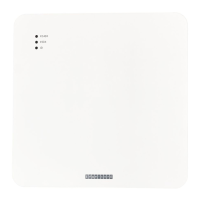Chapter 3
| Network Settings
Port Forwarding
– 51 –
Protocol — The protocol type. (Options: Any, TCP+UDP, TCP, UDP, ICMP;
Default: TCP+UDP)
Destination — The destination interface. (Options: Guest Network, Hotspot
Network, Default Local Network, Internet, Any)
Destination IP — The destination IP address.
Destination port — The destination protocol port. (Range: 0-65535)
Port Forwarding
Port Forwarding can be used to map an inbound protocol type (TCP/UDP) and port
to an "internal" IP address and port. The internal (local) IP addresses are the IP
addresses assigned to local devices at the edge of a network, and the external IP
address is the IP address assigned to the AP interface. This allows remote users to
access different servers on your local network using your
single public IP address.
R
emote users accessing services such as web or FTP at your local site through your
public IP address, are redirected (mapped) to other local server IP addresses and
TCP/UDP port numbers. For example, if you set Type/Public Port to TCP/80 (HTTP
or web) and the Private IP/Port to 192.168.3.9/80, then all HTTP requests from
outside users are forwarded to 192.168.3.9 on port
80. Therefore, by just
using
your external IP address provided by your ISP, Internet users can access the services
they need at the local addresses to which you redirect them.
Figure 33: Port Forwarding
The following items are displayed on this page:
Enabled — Enables port forwarding.
Name — User defined name. (Range: 1-30 characters)
Protocol — Set the protocol to which port forwarding is applied. (Options: TCP,
UDP, TCP+UDP)
External Port — The TCP/UDP port number. (Range: 1-65535)
The more common TCP service port numbers include: HTTP: 80, FTP: 21,
Telnet: 23, and POP3: 110.

